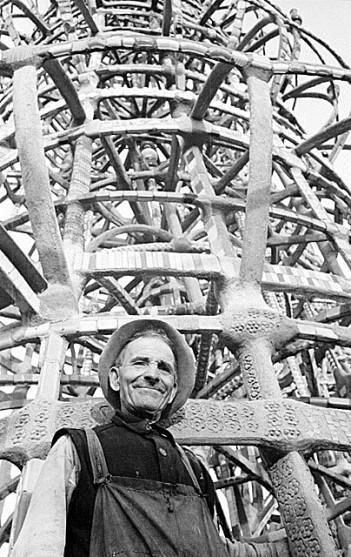The first time I visited the Watts Towers was in 1990, when I came to Los Angeles to attend a conference. From the airport I asked my cab driver to “take me to Watts Towers” before going to my hotel. A lifelong East Coaster, I had no sense of the scale of western cities, so even though it was possibly my largest cab fare ever, the experience was worth it. During every visit since then I have made a private pilgrimage to the Towers because it is my way to honor the artistry and mastery of their maker, Simon Rodia. I find the towers to be out of this world, one of the most unusual and important artworks in our country. Now I live in L.A., thanks to my new job at LACMA, where one of my responsibilities is to oversee the work we are doing for the city at Watts Towers.
Since living and working in Los Angeles I have been curious to learn how locals talk about and experience the Towers. For the past few months I have been talking to an assortment of citizens about the artist, the Towers, and the neighborhood. It has been a unique and singular way to be introduced to our inspiring city!
I didn’t seek out Richard Hardy and Ted Tennorio. Rather, they happened to meet my husband Jay at IHOP one morning. They started talking about L.A., and LACMA, and soon they were talking about Watts Towers. Jay was surprised to learn that his new friends had grown up by the Towers and used to walk by them while Simon Rodia was still alive. It was a moment when one realizes that sometimes history is not too long ago.

Sanford H. Roth, Simon Rodia/Watts Towers, c. 1950, Beulah Roth Bequest
Richard and Ted both lived near 107th Street and they both remember that back in the 1950s Watts was a “rural place and way out from the city,” said Richard. “It was a mixed community with a lot of Italian families and a combination of ethnic groups in the neighborhood, where neighbors had cows in backyards, there was no real plumbing, and the attitude was laid back. It was almost like a sleepy Mexican village. I don’t even remember any freeways. Space was cheap and there were a lot of jobs.” The Towers, said Ted, were “just part of the neighborhood. We would collect bottles and give them to Simon Rodia, but mostly we just left him alone. We never really met him or spoke to him—we were kids—but we saw him in the neighborhood and left supplies for him.”
Richard continued, “When the Watts Rebellion happened we were in our early twenties and do you know that the Towers were not destroyed at that time? It is because they are sacred. Whatever happens in this neighborhood, Rodia’s Towers are respected in Watts.”
Brooke Davis Anderson, Deputy Director of Curatorial Planning



